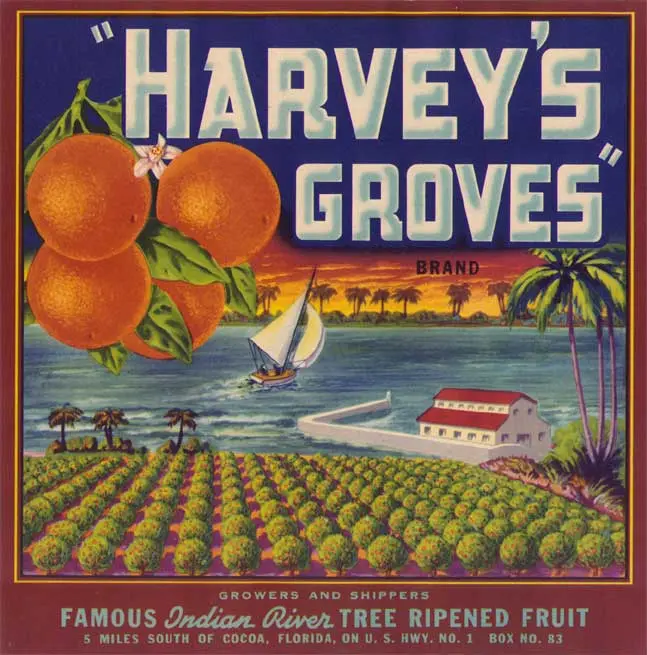Citrus is as much a part of Florida’s image as sunshine, beaches, and theme parks. Like most Florida residents, citrus trees are transplants from somewhere else.
“Many people don’t realize that citrus is not indigenous to our state,” says Patrisha Meyers, director of the Brevard Museum of History and Natural Science. “Citrus plants were actually brought here by the Spanish in the 1500s.”
Christopher Columbus first brought citrus to the New World in 1493, and Ponce de León was a member of his crew. When Ponce “discovered” Florida in 1513, he was probably one of the first to plant orange trees here. Later sixteenth century Spanish explorers did the same.
Grapefruit didn’t arrive in Florida until about 300 years later. The French Count Odet Philippe planted the first grapefruit grove in Florida near Tampa, in 1823. Around the same time, Florida pioneers began establishing orange groves along the St. Johns River.
Florida’s citrus industry began to thrive in the late 1800s. Following the Civil War, Florida produced about one million boxes of fruit annually. With the coming of the railroad in the 1880s, fruit could be effectively shipped out of state. By 1893, more than five million boxes of Florida citrus was shipped to eager consumers in northern states.
Then the Big Freeze of 1894-95 happened. Temperatures in Central Florida fell as low as 11 degrees, killing nearly all of the citrus trees in the region. Many farmers whose crops were devastated left the state. Production levels in 1895 dropped to just 147 thousand boxes.
In the early twentieth century the citrus industry recovered and by 1910, production levels had returned to where they were before the Big Freeze. By 1915, the state produced fifteen million boxes of citrus. Output was at 100 million boxes by 1950, and in 1971, Florida produced more than 200 million boxes of citrus for the first time. Today, only Brazil produces more citrus than Florida.
As Florida’s citrus industry thrived in the twentieth century, the state’s different citrus growers developed unique labels for their shipping crates. Many of these colorful and detailed labels can be appreciated as works of art.
On Friday, July 22, the Brevard Museum of History and Natural Science will open the Florida Citrus Label Exhibit with a wine and cheese reception from 6 pm to 8 pm. Tickets are $30 per person, and are available online at myfloridahistory.org. The museum is located at 2201 Michigan Avenue in Cocoa.
“The labels are all beautiful and I’d like to encourage our visitors to pick out a favorite,” says Meyers. “I finally settled on the Moccasin Brand label. It is a simple label with a worn beaded moccasin in earthy colors set off by a red circle on a dark blue background. It’s my favorite because it takes me back to my childhood home, which is on land that was originally an experimental citrus grove. This brand really drew me back into warm summer days traipsing around Martin County, wearing old moccasins my grandmother gave me, and eating hybrid tangerines from our yard.”
The Florida Citrus Label Exhibit was curated by the Museum of Florida History in Tallahassee, and includes labels from around the state. Some of the brands represented include Caboose from Crescent City, Imperial from Lakeland, Miss Florida from Wauchula, Red Warrior from Umatilla, and White Owl from Howey.
In conjunction with the Florida Citrus Label Exhibit opening, the Brevard Museum of History and Natural Science will unveil their refreshed and updated Brevard County Citrus Exhibit.
“This refresh was made possible by partnerships with local citrus growers, families who have been in the industry for generations,” says Meyers. “I can’t thank the Harvey, Sullivan, Crisafulli, and Parish families enough for their time. I had the privilege of scanning some really great photos of the early citrus industry here in Brevard from these families. Prints of these scans will be on display, as well as some beautiful citrus memorabilia on loan from the Sullivan family. I’m also excited about partnering with the Field Manor museum to incorporate some of their items into the new exhibit.”
These citrus exhibits will be nostalgic for longtime residents and informative for more recent transplants to Florida.
